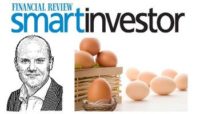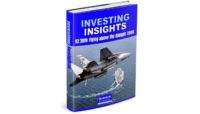Last month we introduced self managed super funds (SMSFs), the fastest growing area of super. With just under a million Australians now SMSF members, we also discussed when you should and should not consider setting one up. This month we use the example of Paula and Michael who, in their mid 50s, use their SMSF as a powerful wealth creation vehicle for their family.
Take control – a new sensation
Disillusioned with their retail super fund’s performance through the GFC, Michael and Paula set up the Never Tear Us Apart SMSF to take control over their investing decisions and to reduce their fees.
Not enough time
According to Michael and Paula, “The ongoing changes to SMSF rules do mystify us, and governments of both persuasions can’t or won’t kick the habit of tinkering with the rules. What you need is either a crystal ball or damn good advice”.
While they were both still busy, working professionals in the entertainment industry, they were keen to retire early and they needed a plan to fulfil this goal. In response to their time constraints and their lack of confidence about keeping on top of the rule changes, they employed an SMSF expert advisor. Invest from scratch After rolling their funds into their SMSF they had a balance of $1.1m to invest. So after carefully devising their investment strategy, they sought to invest wisely.
Obviously ‘investing wisely’ can be harder than it sounds. Here were our tips for Paula and Michael:
- Don’t let anyone rush you to invest
- Don’t invest in anything you don’t fully understand
- Don’t gamble on the one thing – diversify your investments
- Determine your level of risk and stick to that 0213-48 5.
Keep it simple – stick to shares, exchange traded funds (ETFs), property, fixed interest and managed funds.
The weighting game
A famous study undertaken by Brinson, Singer, and Beebower (1991) showed that, on average, 91.5 per cent of portfolio returns are determined by asset allocation, with less than 5 per cent of returns from individual investment selection.
So Paula and Michael were well aware their attitude to risk and return and their asset allocation were crucial decisions. Working with their SMSF advisor, they determined they were ‘balanced growth’ investors (30 per cent defensive; 70 per cent growth) with the following target asset allocation:
| Asset class | Target % | Target $ |
| Cash | 3% | $33,000 |
| Fixed income | 27% | $297,000 |
| Australian equity | 38% | $418,000 |
| Property | 17% | $187,000 |
| International equity | 15% | $165,000 |
| Alternative | 0% | $0 |
| Total | 100% | $1,100,000 |
Paula and Michael then selected investments that adhered to their investment strategy and planned to rebalance back to their target asset allocation periodically.
Search for yield
While both Paula and Michael still earned relatively high salaries, they knew at retirement their income streams would disappear. When retirement drew closer, they would select investments providing consistent and sustainable income to support their desired lifestyle. With interest rates on term deposits falling, they planned to focus on rent from direct property and dividends and franking credits from high yielding ETFs and shares.
Cashflow is king
As Michael and Paula understood the age based super rules, they knew their SMSF was an incredibly powerful vehicle that would enable them to create tax reduced and tax free pension income streams. As they were both in their early to mid 50s, they were aware that opportunities would arise when they turned 55, 60 and 65 and so had a strategy for each key age milestone.
With their advisor, they devised a complementary combination of salary sacrifice strategies, strategic contribution planning and transition pension strategies to reduce tax and maximise their retirement wealth.
Be prepared for the unexpected
With young financially dependent children, Paula and Michael were aware of their own mortality and so were keen to protect their family’s future. What they didn’t know was that as few as 13 per cent of SMSFs have insurance and that new SMSF rules now required all SMSFs to consider insurance for fund members as part of the fund’s investment strategy. By working with their SMSF advisor who refused to accept insurance commissions, they put in place adequate, cost effective life, TPD and income protection insurance.
Devil inside the compliance details
Despite the benefits, running an SMSF is not easy. The administrative burden can be high and trustees take on serious responsibilities. Superannuation rules are extensive and SMSF rules even more so.
Unfortunately for SMSF members, the penalties for getting things wrong can be horrendous. For instance, where members make contributions in excess of their limits, the ATO can levy tax of up to 93 per cent.
We’ve touched upon some basic strategies Paula and Michael have implemented. In the next instalment, we examine more advanced SMSF strategies, including borrowing to invest in property and strategies for effective inter-generational wealth transfer.
_______________________

Tim Mackay BEc (Hons) MBA CA CFP SSA
I am an independent financial planner, SMSF expert and company director. I thrive on providing independent, expert financial advice to my wonderful clients. With international investment banking experience at Deutsche Bank and UBS in London and New York, I was recognised as SMSF Advisor of the Year by Independent Financial Advisor Magazine.
To contact me, speak to my team on 02 8084 0453. Please feel free to connect with me on LinkedIn or on Twitter. You can also visit the my colleague’s (and sisters) website.








Leave A Comment